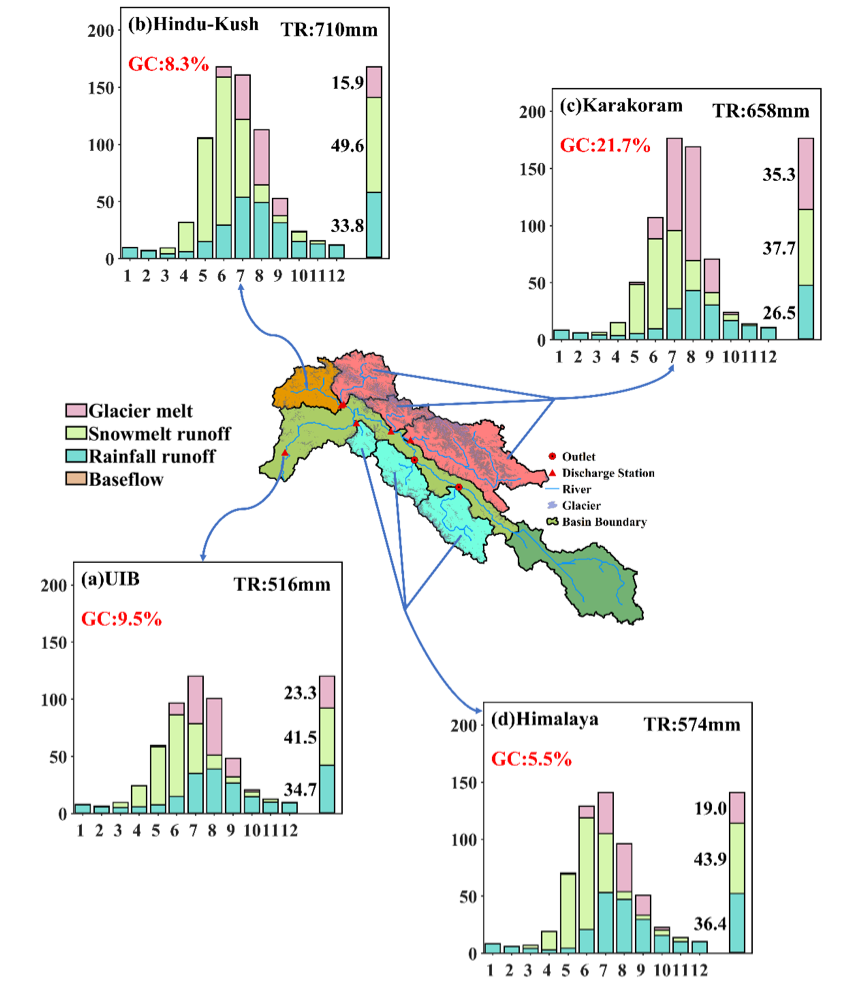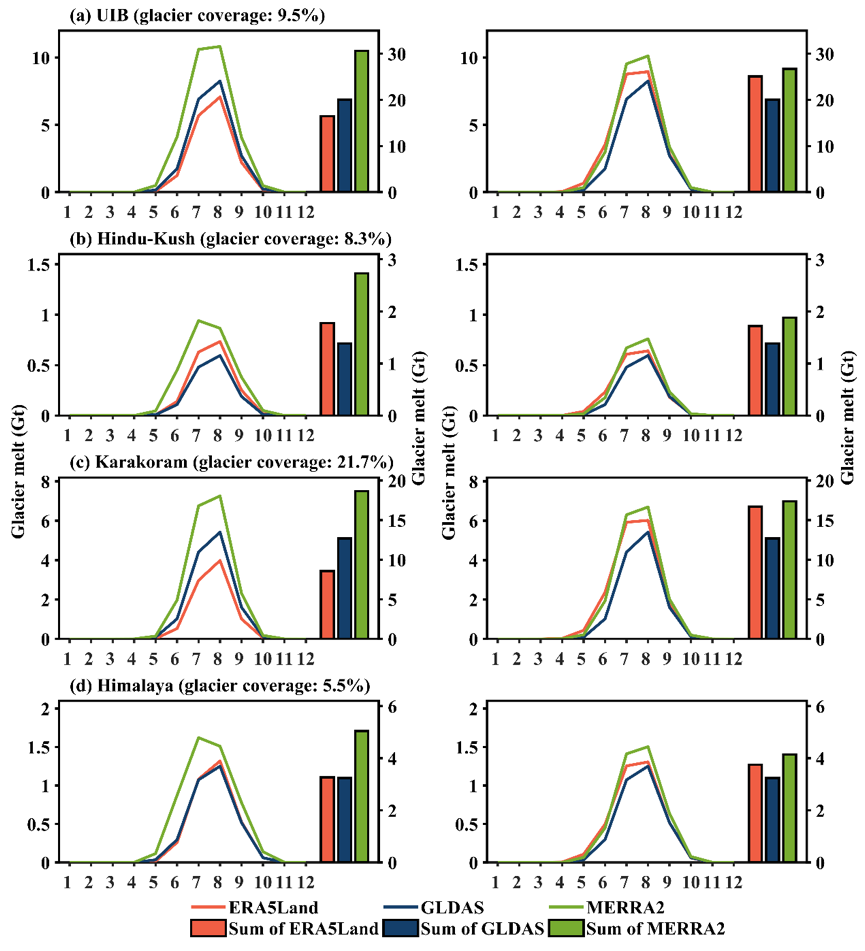JH-Regional Studies: Energy-balance modeling of heterogeneous glacio-hydrological regimes at upper Indus
2024-02-23 22:50:25
6
DOI:https://doi.org/10.1016/j.ejrh.2023.101515

Fig. 6. The seasonal cycles of discharge contributed by glacier melt runoff, snowmelt runoff, rainfall runoff, and baseflow in the UIB at Besham station (a) and its three mountainous regions (b-d, Hindu-Kush, Karakoram, and Himalaya, respectively). The right aside stacked bar plot shows the average annual components of the discharge. The red words show the glacier coverage (GC), and the TR represents the total runoff of each region.

Fig. 11. The comparison of simulated monthly glacier melt with three different air temperature (left) and solar radiation inputs (right) at UIB (a) and its three mountainous regions (b-d). The right bar plot shows the sum of glacier melt during 2001–2020.
